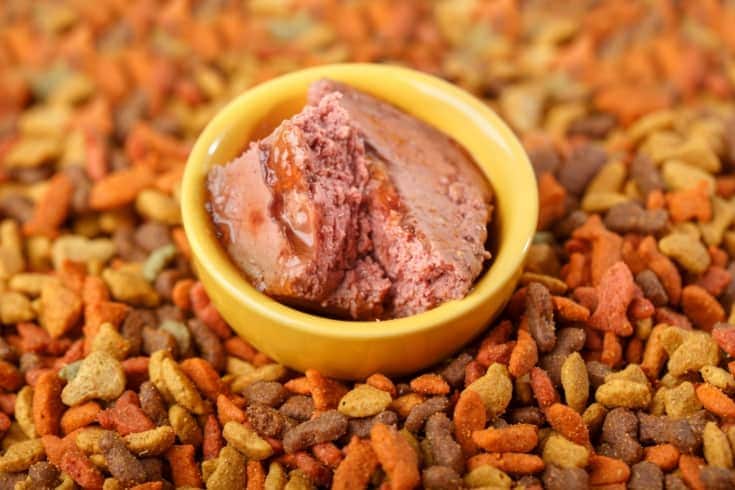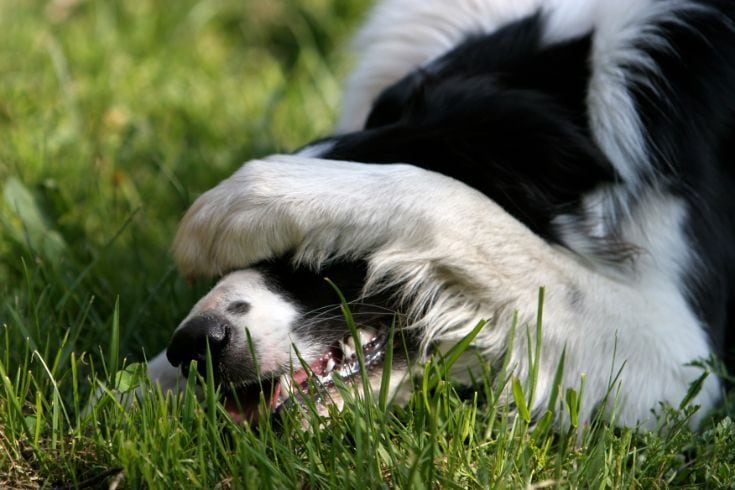If you’re a pet owner, then chances are you care deeply about keeping your furry friends healthy. Unfortunately, grain mites in dog food and treats can be harmful to pets, so it’s vital that pet owners understand what these mites are and how to keep their pups safe from them.
In this blog post, we will delve into the world of grain mites—what they are, how they get into dog food or treats, and tips on preventing them from harming your companion animals! So let’s dive right in!
What Are Grain Mites & Why Are They in Dog Food & Treats?

Have you ever heard of the infamous Grain Mites that can infest dog food and treats? Don’t worry; they aren’t a band of tiny, grain-eating criminals but microscopic pests that feed off of mold and fungi found in dry dog food and grains.
These little critters can sneak into your furry friend’s dry food and cause a variety of issues, such as allergic reactions and digestive problems. So, it’s essential to keep an eye out for any signs of infestation in bags of food and treats in a cool, dry place or airtight container to prevent them from setting up camp. Not only that, but it’s essential to maintain your dog’s gut health by adding probiotics chews for dogs to their diet.
Are Grain Mites Harmful to Pets?
Are you worried that pesky grain mites might harm your furry friend? Don’t fret because these tiny intruders might not be as bad as they seem. In fact, they are more of an issue for humans as they can cause allergies or respiratory problems if inhaled.
It’s often difficult to figure out the cause of grain mites and even harder to get rid of them if you have an infestation. I had to deal with this a while back with my dog’s commercial dog food, and it was not pretty!

How to Identify Grain Mites
Do you have a nervous feeling that there might be unwanted guests sharing your dry kibble with you? Well, if you find tiny white bugs that move quickly around your grains, there’s a chance you may be dealing with grain mites! Not the most pleasant addition to your pantry, but don’t worry; identifying them is pretty easy.
Grain mites are tiny, smaller than a pinhead, reddish-brown to white, and have eight legs. And yes, they move pretty fast. So, next time you spot an intruder in your grains, use these tips to identify them—and promptly remove them!
Here are some tips on how to identify them:
- Look for tiny white bugs moving quickly on grains.
- Observe the size of the bug. They should be smaller than a pinhead.
- Note their color; they are usually reddish-brown to white.
- Check for signs of infestation, such as mold or fungi in grains.
- Be aware that grain mites can cause allergies or respiratory problems if inhaled by humans.
These are tips on how to get rid of them:
- Store dog food and treats in cool, dry places to prevent mite infestations.
- Keep grains away from humidity and high temperatures, which breed grain mites.
- Clean pet food containers and food bowls regularly to remove any residue of the mites.
- Discard all affected foods and replace them with newer ones.
- Check for signs of infestation, such as mold or fungi, in dry food bags.
- Monitor for signs of atopic dermatitis, skin reactions, dermatophagoides farina, and other common allergic reactions.
- Check the expiration date on stored dog food once a month.
Natural Alternatives to Dog Food and Treats That Help Avoid Grain Mite Infestations
“Who let the mites out?” Certainly not us! You know that keeping your furry friend healthy and happy involves more than just walks and cuddles. It also means paying attention to what they eat. But what do you do when you find pesky grain mites infiltrating your dog’s freshly purchased store-bought pet food and treats?
Fear not, my fellow pet parents! There are plenty of natural alternatives out there that can help avoid any unwelcome invasions. Opt for protein-heavy options like meat, fish, and eggs, as well as veggies like sweet potatoes, green beans, and carrots.
And who doesn’t love a good old peanut butter-filled Kong toy as a treat? So swap out those grain-heavy snacks for some natural options and keep those mites at bay!

Conclusion
From examining the potential risks posed by grain mites in dry dog food bags and treats to exploring preventative tips and natural treatment alternatives and using food storage containers, we can now feel more secure in protecting our furry family members.
It’s important to remain vigilant of the signs of a grain mite infestation and take steps immediately if you fear your pet may have been exposed. With knowledge comes power, and now that we know what grain mites are and how to identify them, we can confidently care for our furry companion with peace of mind.
